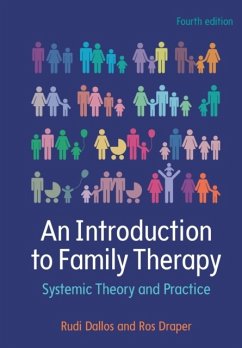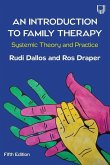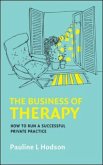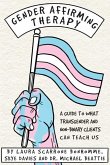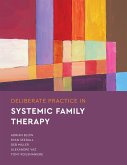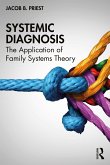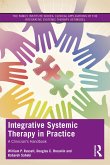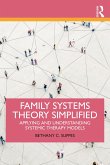Schade – dieser Artikel ist leider ausverkauft. Sobald wir wissen, ob und wann der Artikel wieder verfügbar ist, informieren wir Sie an dieser Stelle.
- Broschiertes Buch
- Merkliste
- Auf die Merkliste
- Bewerten Bewerten
- Teilen
- Produkt teilen
- Produkterinnerung
- Produkterinnerung
The fourth edition of the bestselling An Introduction to Family Therapy provides an overview of the core concepts informing family therapy and systemic practice, covering the development of this innovative field from the 1950s to the present day.
Andere Kunden interessierten sich auch für
![An Introduction to Family Therapy: Systemic Theory and Practice An Introduction to Family Therapy: Systemic Theory and Practice]() Rudi DallosAn Introduction to Family Therapy: Systemic Theory and Practice49,99 €
Rudi DallosAn Introduction to Family Therapy: Systemic Theory and Practice49,99 €![The Business of Therapy The Business of Therapy]() Pauline HodsonThe Business of Therapy40,99 €
Pauline HodsonThe Business of Therapy40,99 €![Gender Affirming Therapy: A guide to what transgender and non-binary clients can teach us Gender Affirming Therapy: A guide to what transgender and non-binary clients can teach us]() Laura Scarrone BonhommeGender Affirming Therapy: A guide to what transgender and non-binary clients can teach us35,99 €
Laura Scarrone BonhommeGender Affirming Therapy: A guide to what transgender and non-binary clients can teach us35,99 €![Deliberate Practice in Systemic Family Therapy Deliberate Practice in Systemic Family Therapy]() Adrian BlowDeliberate Practice in Systemic Family Therapy55,99 €
Adrian BlowDeliberate Practice in Systemic Family Therapy55,99 €![Systemic Diagnosis Systemic Diagnosis]() Jacob B. PriestSystemic Diagnosis33,99 €
Jacob B. PriestSystemic Diagnosis33,99 €![Integrative Systemic Therapy in Practice Integrative Systemic Therapy in Practice]() William P. RussellIntegrative Systemic Therapy in Practice29,99 €
William P. RussellIntegrative Systemic Therapy in Practice29,99 €![Family Systems Theory Simplified Family Systems Theory Simplified]() Bethany C. SuppesFamily Systems Theory Simplified37,99 €
Bethany C. SuppesFamily Systems Theory Simplified37,99 €-
-
The fourth edition of the bestselling An Introduction to Family Therapy provides an overview of the core concepts informing family therapy and systemic practice, covering the development of this innovative field from the 1950s to the present day.
Produktdetails
- Produktdetails
- Verlag: Open University Press
- 4 ed
- Seitenzahl: 488
- Erscheinungstermin: 16. Oktober 2015
- Englisch
- Abmessung: 238mm x 169mm x 32mm
- Gewicht: 846g
- ISBN-13: 9780335264544
- ISBN-10: 0335264549
- Artikelnr.: 43183525
- Verlag: Open University Press
- 4 ed
- Seitenzahl: 488
- Erscheinungstermin: 16. Oktober 2015
- Englisch
- Abmessung: 238mm x 169mm x 32mm
- Gewicht: 846g
- ISBN-13: 9780335264544
- ISBN-10: 0335264549
- Artikelnr.: 43183525
Rudi Dallos is Professor of Clinical psychology and Programme Director of the D.Clin. Psychology training programme at the University of Plymouth. He also teaches on qualifying systemic family therapy courses, an intermediate family therapy course and conducts a variety of guest lecturing. He offers extensive clinical and research supervision, especially in areas related to this proposed publication. He has published a range of book , most recently, Formulation in Psychology and Psychotherapy (2005) , Working Systemically with Families, 2003, Researching psychotherapy and Counselling, 2005, An Introduction to Family Therapy (2005 2nd edition) and Interacting Stories: Narratives, Family Beliefs and Therapy (1997)
Introduction Experiences of systemic and family therapy A family's view Two
therapists' views What is the 'family'? The family life cycle Allowing the
family a voice The organizing framework of this book Key texts offering a
historical overview of systemic and family therapy Setting the scene -
1950s
1. The first phase - 1950s to mid-1970s Cultural landscape Influential
people and ideas Practice Commentary Key texts Skill guides
2. The second phase - mid-1970s to mid-1980s Cultural landscape Influential
people and ideas Practice Commentary Key texts Skill guides
3. The third phase - mid-1980s to 2000 Cultural landscape Influential
people and ideas Practice Commentary Key texts Skill guides
4. Emotions and attachments as the driving force in family systems Emotions
and early family therapy concepts Attachment theory Attachment-oriented
systemic therapies Reflections and summary Key texts
5. Systemic formulation and formulating Systemic theory: Formulation and
formulating A case example of systemic formulation Formulating Commentary
Key texts Skill guides Systemic formulation
6. Twenty-first century practice development: Conversations across the
boundaries of models Cultural landscape Practice Commentary Key texts
7. Couple therapy Culture, family and couples contexts Approaches to couple
therapy Influential people, ideas and services Twenty-first century
practice and service developments Commentary Key texts
8. Research and evaluation Introduction Why conduct research?
Evidence-based practice and practice-based evidence Science, research and
systemic therapy Evaluation research: Does family therapy work? Therapy
process research Family theory research Discussion and reflections Key
texts
9. Reflections 2015 Current state of the art Crystal-ball gazing
Developmental perspectives Review and summary Integrations
therapists' views What is the 'family'? The family life cycle Allowing the
family a voice The organizing framework of this book Key texts offering a
historical overview of systemic and family therapy Setting the scene -
1950s
1. The first phase - 1950s to mid-1970s Cultural landscape Influential
people and ideas Practice Commentary Key texts Skill guides
2. The second phase - mid-1970s to mid-1980s Cultural landscape Influential
people and ideas Practice Commentary Key texts Skill guides
3. The third phase - mid-1980s to 2000 Cultural landscape Influential
people and ideas Practice Commentary Key texts Skill guides
4. Emotions and attachments as the driving force in family systems Emotions
and early family therapy concepts Attachment theory Attachment-oriented
systemic therapies Reflections and summary Key texts
5. Systemic formulation and formulating Systemic theory: Formulation and
formulating A case example of systemic formulation Formulating Commentary
Key texts Skill guides Systemic formulation
6. Twenty-first century practice development: Conversations across the
boundaries of models Cultural landscape Practice Commentary Key texts
7. Couple therapy Culture, family and couples contexts Approaches to couple
therapy Influential people, ideas and services Twenty-first century
practice and service developments Commentary Key texts
8. Research and evaluation Introduction Why conduct research?
Evidence-based practice and practice-based evidence Science, research and
systemic therapy Evaluation research: Does family therapy work? Therapy
process research Family theory research Discussion and reflections Key
texts
9. Reflections 2015 Current state of the art Crystal-ball gazing
Developmental perspectives Review and summary Integrations
Introduction Experiences of systemic and family therapy A family's view Two
therapists' views What is the 'family'? The family life cycle Allowing the
family a voice The organizing framework of this book Key texts offering a
historical overview of systemic and family therapy Setting the scene -
1950s
1. The first phase - 1950s to mid-1970s Cultural landscape Influential
people and ideas Practice Commentary Key texts Skill guides
2. The second phase - mid-1970s to mid-1980s Cultural landscape Influential
people and ideas Practice Commentary Key texts Skill guides
3. The third phase - mid-1980s to 2000 Cultural landscape Influential
people and ideas Practice Commentary Key texts Skill guides
4. Emotions and attachments as the driving force in family systems Emotions
and early family therapy concepts Attachment theory Attachment-oriented
systemic therapies Reflections and summary Key texts
5. Systemic formulation and formulating Systemic theory: Formulation and
formulating A case example of systemic formulation Formulating Commentary
Key texts Skill guides Systemic formulation
6. Twenty-first century practice development: Conversations across the
boundaries of models Cultural landscape Practice Commentary Key texts
7. Couple therapy Culture, family and couples contexts Approaches to couple
therapy Influential people, ideas and services Twenty-first century
practice and service developments Commentary Key texts
8. Research and evaluation Introduction Why conduct research?
Evidence-based practice and practice-based evidence Science, research and
systemic therapy Evaluation research: Does family therapy work? Therapy
process research Family theory research Discussion and reflections Key
texts
9. Reflections 2015 Current state of the art Crystal-ball gazing
Developmental perspectives Review and summary Integrations
therapists' views What is the 'family'? The family life cycle Allowing the
family a voice The organizing framework of this book Key texts offering a
historical overview of systemic and family therapy Setting the scene -
1950s
1. The first phase - 1950s to mid-1970s Cultural landscape Influential
people and ideas Practice Commentary Key texts Skill guides
2. The second phase - mid-1970s to mid-1980s Cultural landscape Influential
people and ideas Practice Commentary Key texts Skill guides
3. The third phase - mid-1980s to 2000 Cultural landscape Influential
people and ideas Practice Commentary Key texts Skill guides
4. Emotions and attachments as the driving force in family systems Emotions
and early family therapy concepts Attachment theory Attachment-oriented
systemic therapies Reflections and summary Key texts
5. Systemic formulation and formulating Systemic theory: Formulation and
formulating A case example of systemic formulation Formulating Commentary
Key texts Skill guides Systemic formulation
6. Twenty-first century practice development: Conversations across the
boundaries of models Cultural landscape Practice Commentary Key texts
7. Couple therapy Culture, family and couples contexts Approaches to couple
therapy Influential people, ideas and services Twenty-first century
practice and service developments Commentary Key texts
8. Research and evaluation Introduction Why conduct research?
Evidence-based practice and practice-based evidence Science, research and
systemic therapy Evaluation research: Does family therapy work? Therapy
process research Family theory research Discussion and reflections Key
texts
9. Reflections 2015 Current state of the art Crystal-ball gazing
Developmental perspectives Review and summary Integrations
